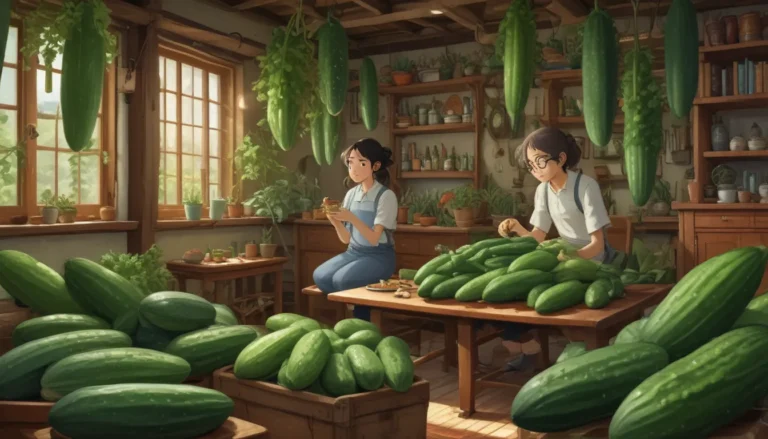The Comprehensive Guide to Growing Cranberry Plants in Your Garden

Do you enjoy using fresh cranberries in your baking, such as bread, muffins, or homemade granola mix? Perhaps you appreciate the tangy sweetness they add to your holiday table or the health benefits they provide in juice form. Whatever your reason for loving cranberries, have you ever considered growing them in your garden?
Many people believe that cranberries are challenging to grow at home or can only thrive in bogs. While it’s true that commercial crops are often grown in wet conditions, it’s entirely feasible to cultivate cranberries in your garden if you can provide the right environment.
What You’ll Discover in this Guide
- Cultivation and History
- Propagation
- How to Grow
- Growing Tips
- Cultivars to Select
- Managing Pests and Disease
- Harvesting
- Preserving
- Recipes and Cooking Ideas
- Quick Reference Growing Guide
Cultivation and History
Cranberries belong to the genus Vaccinium, subgenus Oxycoccus, and are part of the Ericaceae family, which also includes blueberries. The native North American species, Vaccinium macrocarpon, is a low-growing, woody perennial plant with rhizomatous roots. It produces runners up to six feet long and bears flowers and fruits primarily on upright stems.
Historically, native peoples in North America like the Algonquin, Cree, and Chippewa used cranberries for food, medicine, and dye. The berries were collected and dried for use in pemmican, a nutritious, long-lasting food. Over time, cranberries became a popular ingredient worldwide in various dishes and beverages.
Propagation
While cranberries can be grown from seed, it’s essential to know that seed-grown plants may take three to five years to bear fruit and might not produce true-to-type offspring. Stem cuttings offer a more reliable method of propagation, with plants rooting easily for new growth.
Transplanting existing seedlings or nursery starts is a convenient way to establish cranberry plants in your garden. Make sure to provide acidic, well-drained soil and the necessary space for root expansion.
How to Grow
Once established, cranberry plants require consistent moisture, acidic soil, and cold temperatures to thrive. Adequate irrigation, weed control, and minimal fertilization are key to maintaining healthy plants. Protecting your crops during winter with organic mulch will help provide the necessary chill hours.
Growing Tips
- Ensure your soil is acidic.
- Plant in a sunny location with partial afternoon shade.
- Protect young plants during winter with mulch.
Cultivars to Select
There are numerous North American cranberry cultivars available for home gardeners. Varieties like ‘Early Black,’ ‘Pilgrim,’ and ‘Stevens’ offer different fruiting times, resistances, and flavors. Select cultivars based on your climate and preferences to maximize your harvest.
Managing Pests and Disease
While cranberry plants are relatively pest and disease-resistant, watching out for common issues like cranberry fruitworms and cranberry weevils can help protect your crop. Employing preventative measures and beneficial predators can aid in pest management.
Harvesting
Knowing when and how to harvest cranberries is crucial for preserving their freshness and flavor. Ripe cranberries are firm to the touch and deep red in color. Using the bounce test or monitoring fruit maturity indicators can guide you in determining the best time to harvest.
Preserving
Freezing, drying, or using fresh cranberries right after harvest can extend their shelf life and offer various culinary possibilities. Properly storing or treating cranberries before consumption ensures that you can enjoy their taste and texture all year round.
Recipes and Cooking Ideas
From roasted cranberry dishes to preserved sauces and baked goods, the culinary potential of cranberries is vast. Try incorporating fresh or preserved cranberries into traditional recipes or innovative creations to savor their unique flavor profiles.
Quick Reference Growing Guide
For a comprehensive overview of key points about growing cranberries, consult this quick reference guide for planting, maintenance, harvest, and care tips. Use this guide as a handy tool to inform your gardening practices and ensure successful cranberry cultivation.
Conclusion
Growing cranberries in your garden can be a rewarding and enjoyable experience. By following the essential guidelines for cultivation, propagation, and care, you can enjoy a fresh supply of cranberries for various culinary purposes. Experiment with different cultivars, preservation methods, and recipes to elevate your cranberry gardening journey.
Have you considered growing cranberries in your garden? Share your thoughts or experiences in the comments below. For more gardening tips and fruit-growing guides, explore related articles on cultivating strawberries, cantaloupe, and raspberries.





